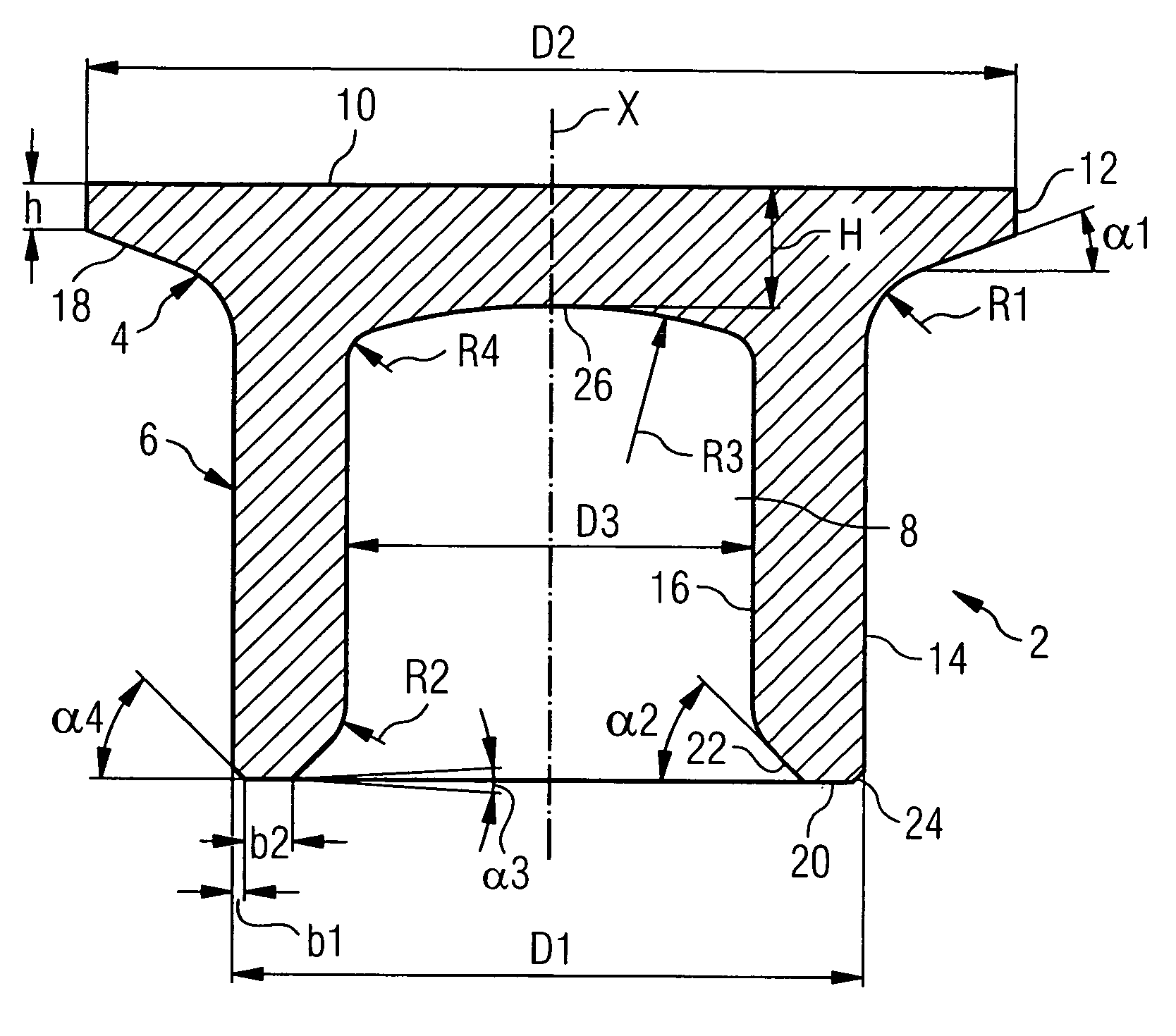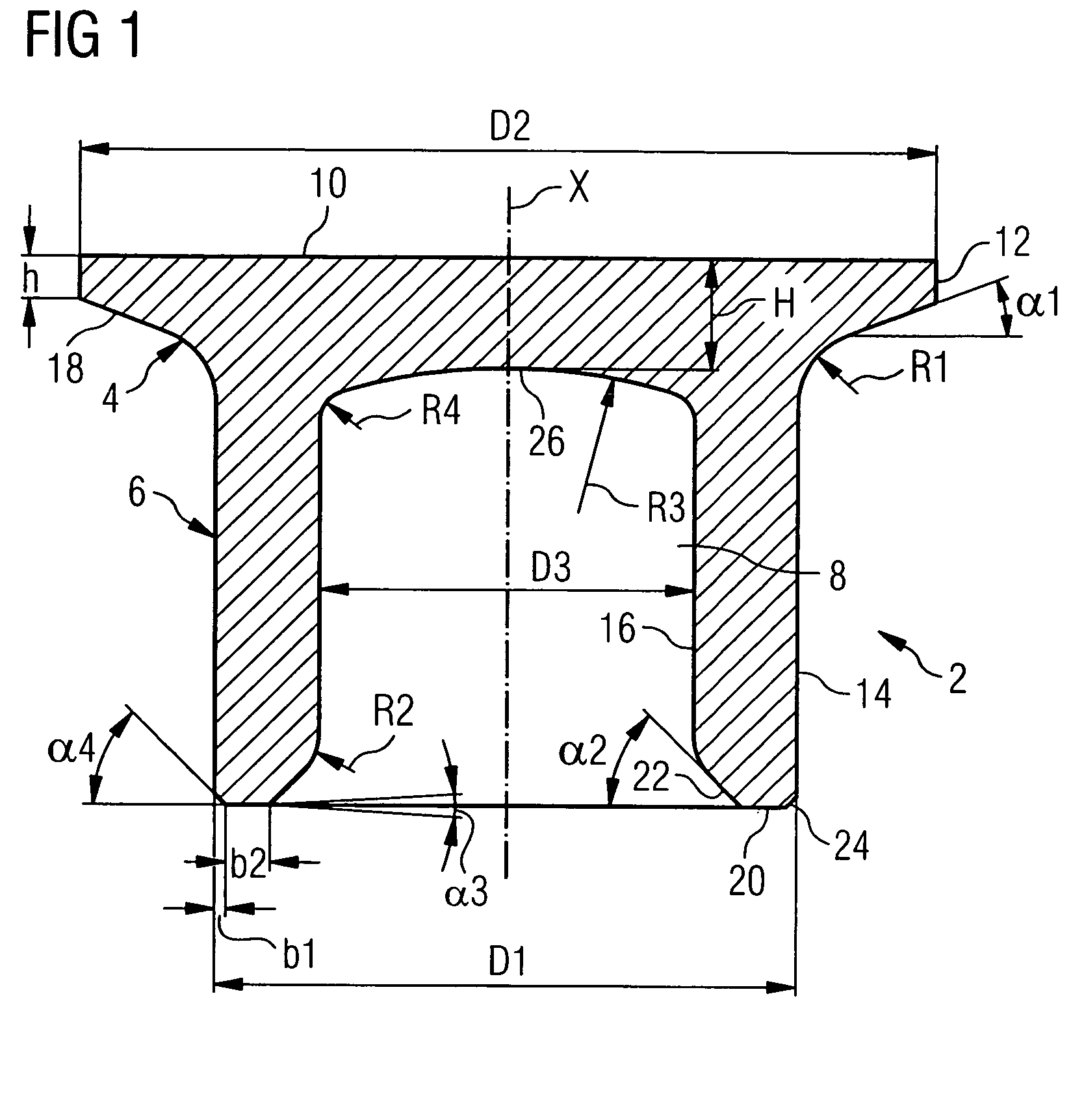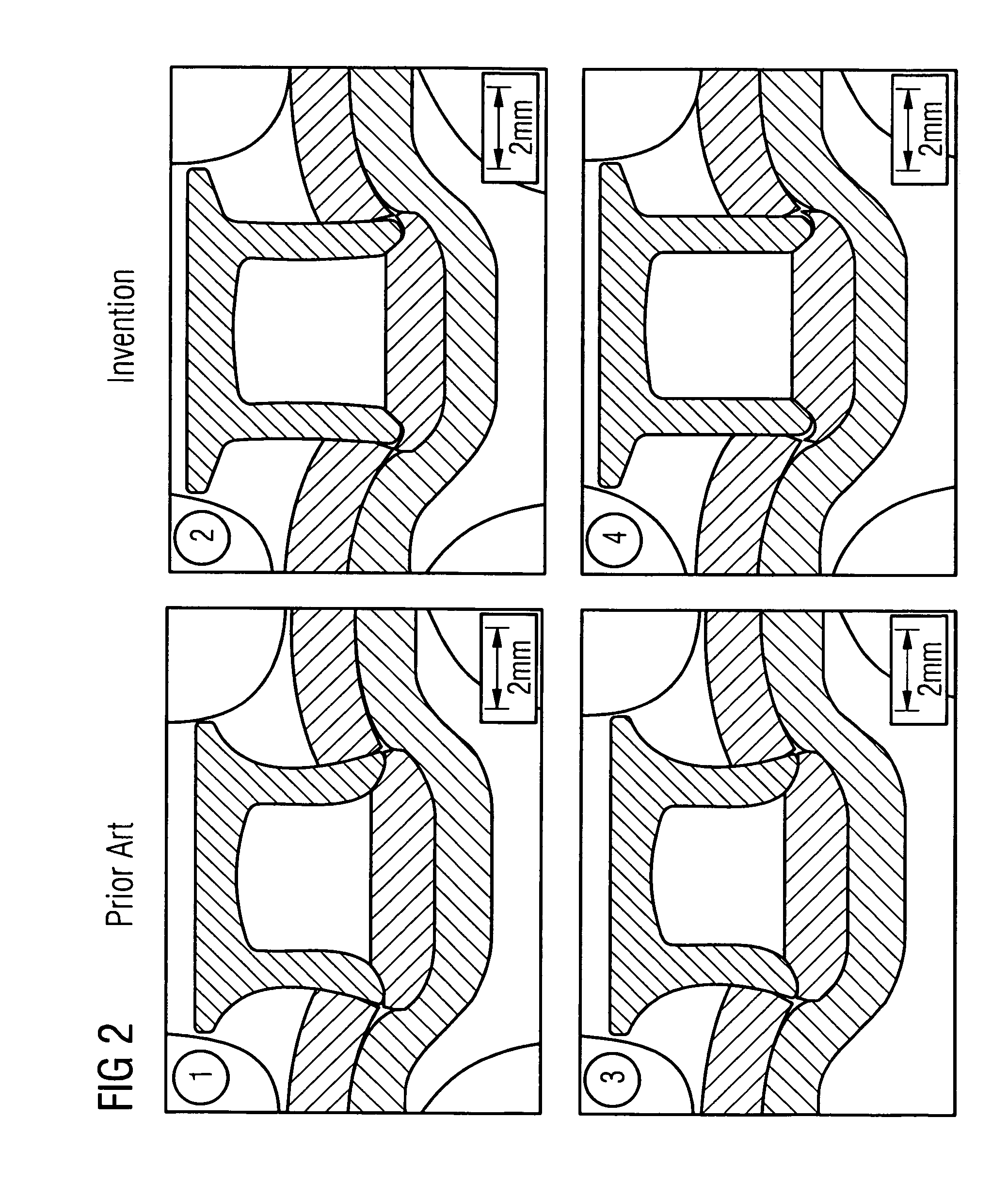Self-piercing rivet
a self-piercing rivet and rivet joint technology, applied in the direction of threaded fasteners, screws, fastening means, etc., can solve the problems of limiting factors, and achieve the effect of optimizing the joint quality of the self-piercing rivet joint, high strength, and optimized load bearing performan
- Summary
- Abstract
- Description
- Claims
- Application Information
AI Technical Summary
Benefits of technology
Problems solved by technology
Method used
Image
Examples
Embodiment Construction
[0028]With the help of FIG. 1 a concrete embodiment of a semihollow self-piercing rivet designed according to the invention is described.
[0029]The self-piercing rivet 2 is designed rotationally symmetrical with reference to a central axis X and consists of a rivet head 4 and a rivet shank 6 with a central hole 8, which is designed as a blind hole.
[0030]The rivet head 4 has a (preferably plane) top side 10 and a (preferably cylindrical) head exterior 12. The head exterior 12 has a diameter D2 and an axial height h.
[0031]The rivet shank 6 has a cylindrical shank exterior 14 and a cylindrical shank interior 16, which bounds the hole 8. The cylindrical shank exterior 14 has a diameter D1, and the cylindrical shank interior has a diameter D3. Reference is made of the fact that the shank exterior 14, for specified application cases, can be designed slightly diverging at least in certain places in order to minimize the gap formation between the joined metal sheet sheets.
[0032]The cylindric...
PUM
 Login to View More
Login to View More Abstract
Description
Claims
Application Information
 Login to View More
Login to View More - R&D
- Intellectual Property
- Life Sciences
- Materials
- Tech Scout
- Unparalleled Data Quality
- Higher Quality Content
- 60% Fewer Hallucinations
Browse by: Latest US Patents, China's latest patents, Technical Efficacy Thesaurus, Application Domain, Technology Topic, Popular Technical Reports.
© 2025 PatSnap. All rights reserved.Legal|Privacy policy|Modern Slavery Act Transparency Statement|Sitemap|About US| Contact US: help@patsnap.com



